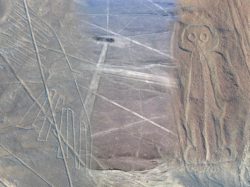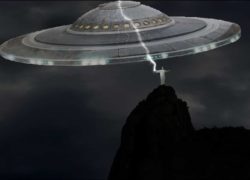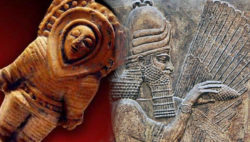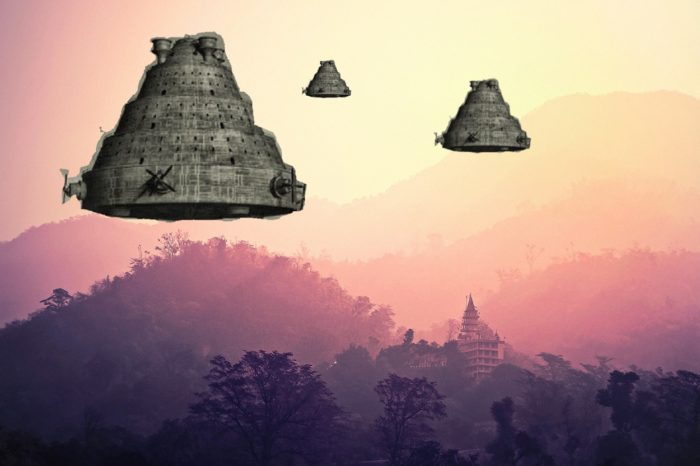
The Ancient Alien Evidence And Influence Of The Indus Valley Civilization
- By
- July 4, 2021
- December 5, 2021
- 17 min read
- Expert Opinion
- Posted in
- Aliens, Agendas
When we think of ancient civilizations many of us will think of ancient Egypt, Greece, or Mesopotamia. However, the ancient civilizations of the Indus Valley region were undoubtedly just as advanced as any other from the ancient world. In fact, some researchers suggest they were arguably the most advanced of all the ancient civilizations.
So, it might not come as too much of a surprise to those in the UFO community that many believe there was an extraterrestrial influence in the region at some stage in the distant past.

Was there an alien influence over the Indus Valley Civilization?
What’s more, the ancient Sanskrit texts of the region speak of just such an alien influence in the form of the many gods. Furthermore, many who have studied these texts insist that they are not merely myths, but historical records that should be taken at face value.
We should note that Hinduism is the world’s oldest surviving religion, and very much a connection for us to the ancient world. However, the ancient writings are largely dismissed by those in the west.
During a lecture by Raj Vedam, he points out that even their position as a great civilization is glossed over, as is the scientific, medical, and technological knowledge that is contained in the ancient texts, with some attempts to even discredit this information. Why is this? Might it be because an acceptance of these writings as fact will force the rest of the world to alter its perception of human and world history?
Contents
- 1 Arguably The Most Highly Advanced Civilization Of The Ancient World
- 2 The Rediscovery Of Mohenjo-Daro And Harappa
- 3 Evidence Of Nuclear Weapons In The Indus Valley?
- 4 The Bhagavad-Gita And The Weapons Of The Kurukshetra War
- 5 The Vimanas
- 6 The Hindu “Gods” – Evidence Of Extraterrestrial Visitation?
- 7 Connections To The Apparently Mythical Land Of Lemuria
- 8 A Global Civilization Of “The Gods” In Deep Antiquity?
- 9 Expert Opinion
Arguably The Most Highly Advanced Civilization Of The Ancient World
There is no doubt that the Indus Valley Civilization (sometimes referred to as the Harrapan Civilization) was a highly advanced one and covered much more land than what is present-day India today (stretching into modern-day Pakistan and parts of Afghanistan, for example).
The cities of the Indus Valley appear to truly have been something to behold, with intricate planning evident, including advanced drainage and water supply systems. The cities themselves were made up of a combination of baked-brick houses alongside many much larger industrial and non-residential buildings, all of which employed what appear to be advanced building techniques. Many houses even had separate bathrooms that would lead to the drainage systems outside.
In our article looking at modern-day UFO sightings in the Indian region, we touched on the apparent advanced nature of the one-time Indus Valley, not least its buildings, and the methods and materials they used to construct them. And these building methods can be read about in the Vedic scriptures (indeed, they are known as Vedic Architecture).
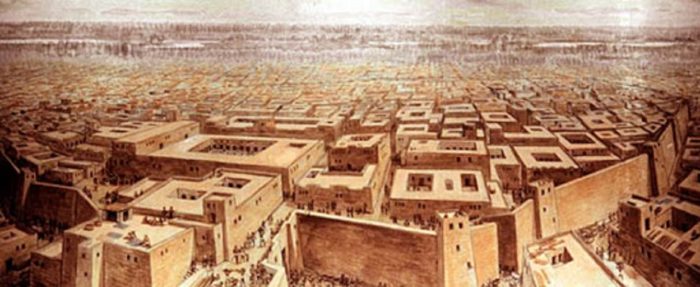
The Indus Valley Civilization was one of the most advanced in history
And we know that they were highly advanced in other areas too, not least medicine, of which there is an abundance of information to be found in the Sushruta Samhita, recorded a century before Hippocrates, who is largely regarded (at least in the West) as the “father of modern medicine”. However, much like the Indus Valley civilization itself, many researchers believe that these practices date back much further than 800 BC when they were recorded, with some suggestions stating they likely go back to the end of the last Ice Age, around 10,000 to 12,000 years ago.
They were also highly efficient at metallurgy, agriculture, trade, and there are even suggestions of organized authorities and governments who seemingly planned the big metropolis-like cities and industries of the regions.
The Rediscovery Of Mohenjo-Daro And Harappa
In the 1920s the discovery of two cities of the Indus Valley region located in what is now modern-day Pakistan, Mohenjo-Daro and Harappa, would offer a deep insight into the ancient civilization that constructed and lived in these metropolises of antiquity.
Much like the Indus Valley region in general, the cities had a combination of brick-built houses with intricately designed water and drainage systems alongside industrial areas and lavish buildings for religious and even administrative purposes.
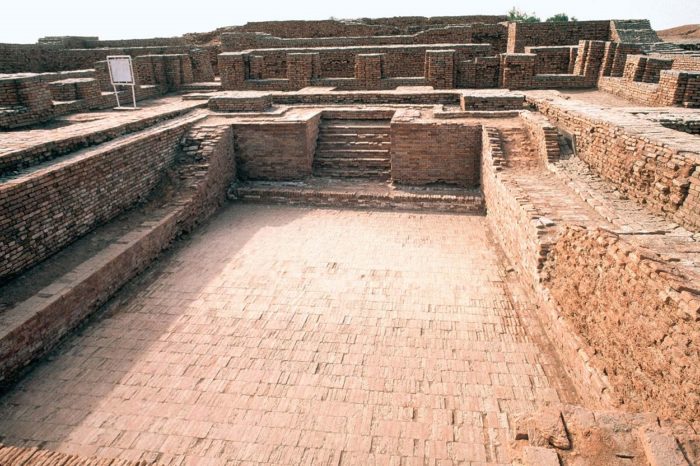
The site of Mohenjo-Daro
Perhaps interestingly, especially when we consider some of the grand cities of the modern world such as London, New York or Paris, alongside the seemingly wealthier residents of the city, there were much more basic housing, usually near the industrial areas, suggesting that, like today, there was very much a disparity between classes of the population.
Said to have been built around 2600 BC, the cities – and the Indus Valley civilization – are without a doubt one of the oldest in history. However, as we will see shortly, there are some who believe the cities were constructed much earlier than the dates officially recognized, with some even claiming that many cities that would have been part of the Indus Valley civilization may have even been constructed by an unknown race – possibly the gods of the ancient world, or their descendants – after The Flood.
What was particularly interesting to some researchers, though, particularly at Mohenjo-Daro, is the suggestion that some type of nuclear incident had taken place.
Evidence Of Nuclear Weapons In The Indus Valley?
Researcher David Davenport would examine the city in the late-1970s and would do so for a decade, eventually releasing the book, Atomic Destruction 2000 BC in which he essentially claimed that nuclear weapons had likely been what brought the city to its end in what was a great war of ancient times – one that used advanced weapons.

Were nuclear weapons used in the ancient world?
What is perhaps interesting is that many of the texts of the Mahabharata speak of just such a war where highly advanced and destructive weapons were used. And if we subscribe to the notion that these writings are historical fact and not merely legends, then we should perhaps take them, and Davenport’s theories seriously.
One particular verse, for example, according to Davenport’s work, reads:
…a white-hot incandescent column of smoke and flame… that was a thousand times brighter than the sun rose in infinite brilliance and reduced the city to ashes. Water boiled…horses and war chariots were burned by the thousands… the corpses of the fallen were mutilated by the terrible heat so that they no longer looked like human beings… [1]
Other verses continue that “the hair and nails fell out” and that “pottery broke without apparent cause”. Furthermore, “after a few hours, all foodstuffs were infected” while soldiers that had survived the blast “threw themselves in streams…to escape from this fire”.
While the meanings of the verses are perhaps open to interpretation, including whether they are factual or a work of fiction, even the most skeptical of people would have to agree that the writings sound unsettlingly familiar to how we might describe a nuclear explosion in the modern era.
As Though People “Dropped Dead” In The Streets!
One of the reasons for Davenport’s suggestions was sparked by the discovery of over 40 skeletons that had seemingly just “dropped dead” in the streets. Several were even found holding hands, perhaps suggesting that whatever had taken place it had induced severe terror and fright.
According to British archeologist, Paul Bahn, in 2002 while at the site, he found himself in a room near the public well of the city. In this room, there were “the skeletons of two individuals who appeared desperately to have been using their last scraps of energy to crawly up the stairs leading from the room to the street”. He also witnessed several other skeletons that were “strangely contorted” suggesting a sudden but agonizing death.
Even more intriguing, though, was the fact that, according to Davenport’s research, several of the skeletons brought back radioactive readings. In fact, so high were these readings, that Davenport would compare them to those in Nagasaki after the dropping of the atomic bomb that, ultimately, brought the Second World War to an end.
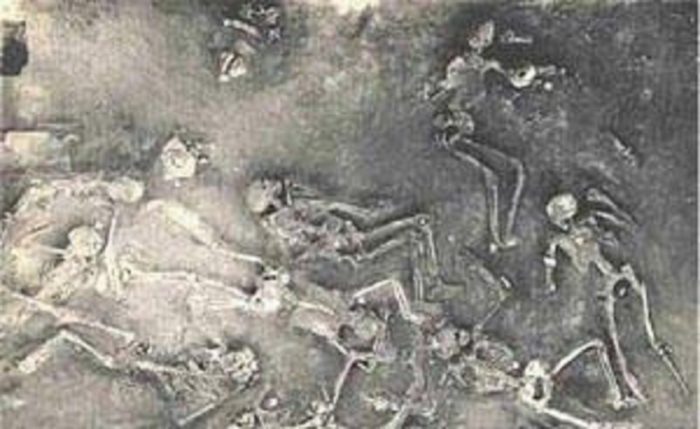
The skeletons discovered at Mohenjo-Daro
Was this what had happened here? Had a conflict that had become so brutal and bloody been brought to an abrupt end with just such a weapon? Many researchers point to the Kurukshetra War as described in the Mahabharata, with many insisting it to be a genuine historical event.
It is perhaps worth noting the apparent response of Robert Oppenheimer (known as the “father of the atomic bomb”) who is said to have responded when asked if the bombs tested under the Trinity program were the first such weapons on Earth said, “Yes, in modern times”.
We should note that many are doubtful if Oppenheimer actually said this, and there doesn’t appear to be a solid source (newspaper report or video/audio) of him actually doing so. However, it is known that he had an intense interest in the Sanskrit texts (in particular the Indian war epic, the Bhagavad-Gita), and very much believed in, at least the possibility that the writings describing such weapons in ancient history were not mere legends but historical fact. We will return to this war epic shortly. For now, though, we shall return to the research of David Davenport.
Further Evidence Of Something Deadly And Out Of The Ordinary?
Davenport would discover areas of the city [2] where vitrification had taken place – essentially where the rocky, sandy ground had heated so quickly (to a required temperature of around 1,500 degrees Celsius) before cooling again just as quickly and had become infused into a crystalized, glass-like substance.
What’s more, Davenport even believed he had identified the epicenter of an apparent blast – one that would have had to have been nuclear in nature to have caused both the vitrification and the radioactive readings on the skeletons. The epicenter covered a radius of around 50 yards, with everything within this circle having fused or crystallized. Even more intriguing to Davenport was that the bricks of the houses that faced the epicenter (around 60 yards away) had melted on that side only, suggesting that a blast had occurred.
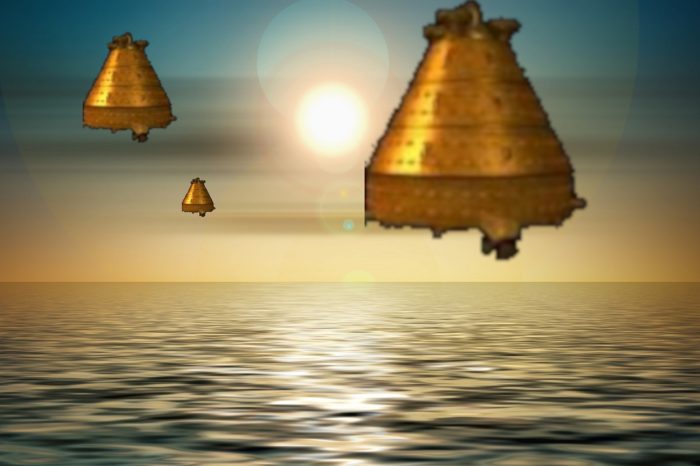
Did advanced vehciles launch weapons from above the Indus Valley?
Further supporting the claim of a nuclear incident in the ancient past, Davenport asked why the skeletal remains had not completely decomposed, and why, as open as they would have been to the elements in the years following their death, were they not essentially eaten by scavengers and predators?
Again, likening the environment to the fallout of Nagasaki and Hiroshima following the atom bombs being used against them by the United States in the summer of 1945, it was Davenport’s claim that a similar nuclear weapon had been used over Mohenjo-Daro. What’s more, given that there appeared to be no obvious weapons near the discovered skeletons, it was likely that these particular remains were the civilians of the city as opposed to soldiers.
Interestingly, despite much opposition to and dismissal of his theories, there were several who came out in support of them. Just one was Professor Antonio Castellani, who agreed that it was “possible that what happened at Mohenjo-Daro was not a natural phenomenon”, pointing to the lack of volcanic activity that could have been responsible.
We should note that the claims of such a nuclear war remain a debate among many researchers and scholars. And while there is certainly no solid proof of such an event, the idea is extremely interesting when we consider the conflicts described in the Sanskrit texts.
The two short videos below look at Mohenjo-Daro a little further.
The Bhagavad-Gita And The Weapons Of The Kurukshetra War
In the texts of the Bhagavad-Gita, the Kurukshetra War is described in great detail, as are the weapons seemingly at each army’s disposal. One such weapon, for example, called Astra, could destroy entire legions at a time, stating that it would cause “crowds of warriors with steeds and elephants and weapons to be carried away as if they were dry leaves of trees”.
Another specific weapon, the Brahmastra, sounds very much like a nuclear missile or bomb, stating it was a “single projectile charged with all the power in the universe”. What’s more, anything that was struck by the Brahmastra would be “utterly destroyed (and) land would become barren and lifeless, rainfall would cease, and infertility in humans and animals would follow for eons of time”.
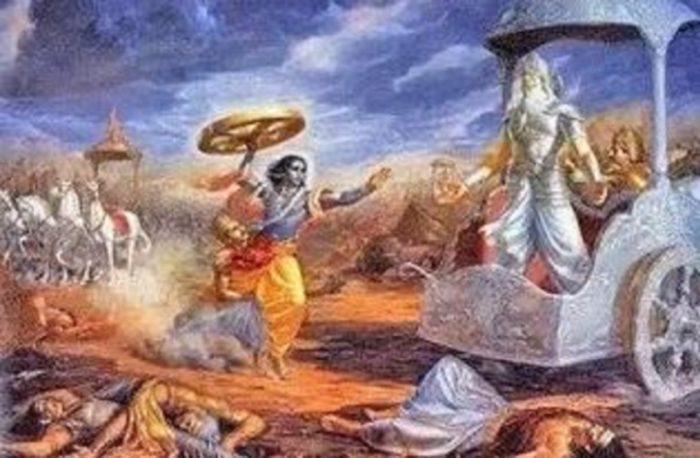
Depiction of the Kurukshetra War
Of even more intrigue, the Bhagavad-Gita even describes an incident when this seemingly nuclear-type weapon was utilized and unleashed by the Pandavas over their enemy, the Kauravas, at the end of an 18-day battle. The Kauravas were indeed destroyed in an instant, bringing an end to the bloody conflict. However, in the immediate aftermath, the Pandavas found that the entire region was destroyed, as well as their enemies. The entire city had been turned to a desolate, lifeless desert (said to be in what is now modern-day Rajasthan). There are differing opinions as to when the Kurukshetra War might have taken place. Some researchers suggest the battle occurred around 1000 BC, while some set it back a further 2,000 years to around 3100 BC.
It is thought by some researchers, that although the war only lasted 18 days, it was essentially the culmination of years of minor conflict. It is certainly agreed that it must have been a truly important period given that there are multiple pages of text on this particular conflict.
A Connection To The Apparent Interest In Nuclear Facilities In The Modern UFO Era?
It is probably worth our time to mention the apparent interest that modern-day UFO occupants appear to have in nuclear facilities and weapons on Earth.
If we assume for one moment that these gods of the ancient world were indeed extraterrestrial – or even the descendants of extraterrestrials – and that there is a connection between those gods and the alleged extraterrestrials of the Modern UFO era, then might it be that this interest in the nuclear capabilities of humanity is due to their own knowledge of what awaits us if we choose to unleash such weapons again? Or might, as their interest in nuclear power plants might suggest, there be a concern of an accident that might be bigger, and more devastating than Chernobyl?
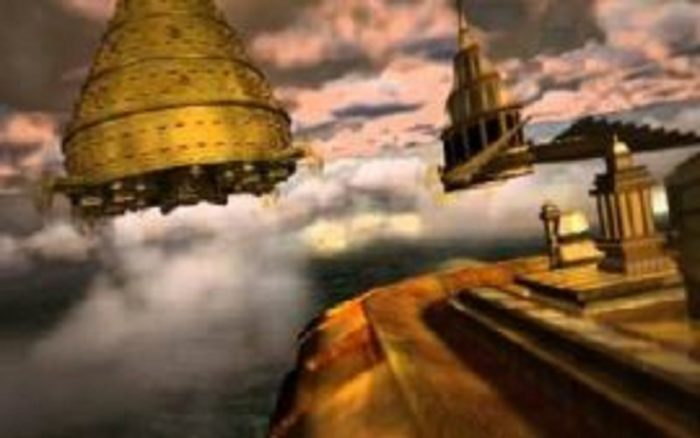
Did advanced technology exist in the Indus Valley in ancient times?
We might also remind ourselves of the many environmental warnings that are told of by alleged alien abductees. And while many of these revolve around how we treat the planet and our relationship with nature, if we assume a connection between the gods of antiquity and apparent aliens in the modern world, they might come from personal experience as opposed to some unknown alien agenda.
If we remember that the Pandavas were somewhat surprised that the land of their enemies was completely destroyed and inhospitable to life, these environmental warnings and close supervision of our nuclear capabilities might be an attempt to have us learn from their mistakes before we repeat them. It is perhaps interesting to acknowledge that behind the destruction of Atlantis we are told that the people essentially plundered the land and upset the balance of nature, which we might be seen to be doing today through rampant industrialization and all that comes with it.
Perhaps, given that many of those who would stand to lose fortunes should humanity learn the apparent lessons of this seemingly lost civilization, as well as embrace the technological lessons and instructions that might lessen our reliance on such fuels and industries, it shouldn’t come as too much of a surprise that some people believe there is an active effort to keep such writings in the realms of legends as opposed to historical fact.
The Vimanas
Of course, one of the most intriguing aspects of the Indus Valley Civilization – at least for many in the UFO community – is the writings telling of flying aircraft. The name of the ancient aircraft used by the gods is Vimanas. And, according to many writings in the ancient Sanskrit texts, they were not only used to traverse the skies of the Earth but could also venture into outer space. And according to some who have studied such writings, these vehicles were active in the Earth’s skies around 12,000 to 15,000 years ago.
The ancient writings describe these Vimanas as being “two-storied celestial chariots with many windows” that would “roar off into the sky until they appeared like comets” to those on the ground. These ships would fly to the “solar and stellar regions” and were powered by “winged lightning”. These Vimanas were sometimes triangular, or pyramid-shaped, and sometimes similar to a cigar. Furthermore, like the writings we have touched on above, the writings of the Vimanas state that they were often used to fight battles from the skies. And the details they mention are intriguing, to say the least.
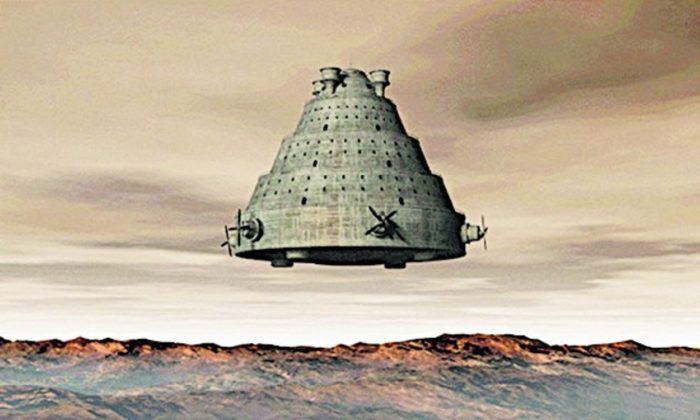
An artist’s impression of a Vimana
For example, there appears to have been weapons that could outright destroy enemy aircraft (suggesting that other civilizations or a breakaway of the Indus Valley civilization had also mastered aeronautics), as well as technology that could “photograph” enemy aircraft (like reconnaissance vehicles of the modern world?). There was further the ability to make a plane invisible (cloaking?) as well as being able to render the pilots of other planes unconscious.
Even more interesting, the texts even go into detail about the specific clothing that should be worn by pilots of these crafts, which differs to the clothing suitable for passengers, as well as strict diets for the pilots so that they remain in good health in order to fly (we might remind ourselves that modern-day pilots have to pass physicals today).
Indeed, if we assume, as many do, that these writings are accurate of events that took place thousands of years ago, then the understanding of multiple sciences must have been widespread in the Indus Valley civilization.
There are multiple different Vimanas described. For example, a Jalayan is a vehicle that can operate equally in the skies or in water, while a Kaara operates on the ground and in water. There is also a vehicle that is comprised of three separate stories named a Tritala, as well as a three-wheeled aerial vehicle named a Trichakra Ratha, while a Vaayu Ratha was powered by gas or wind. There also appear to be descriptions of technology that allowed those in one plane to listen to the conversation of those in another – this would appear to be some kind of wireless communication device much like modern-day pilots use today.
What’s more, many of the writings even speak of using Hydrogen and water to create electricity to power such vehicles. And perhaps showing how advanced this civilization was, these “primitive” types of planes were essentially emergency escape vehicles.
As we have discussed previously, 3D models of Vimanas – based on instructions in Sanskrit texts – have been proven, albeit in theory, to be aerodynamically sound. Should a vehicle be built and tested on a full scale, it just might take a large step to proving that not only can these vehicles fly as the texts state they can, but that they were likely to be found in the skies – and indeed in space – many thousands of years ago.
The short video below examines the Vimanas a little further, while the video after that looks at this ancient technology a little more in-depth.
The Apparent Flight Of Shivkar Bapuji Talpade
As intriguing as the accounts of Vimanas from the ancient world of the Indus civilization are, we might do well to turn our attention to the experiments of Indian scientist, Shivkar Bapuji Talpade, who eight years before the historic first flight of the Wright Brothers in 1895, is said to have managed an even longer flight over Chowpatty Beach in Mumbai. [3] And even more amazingly, the aerial vehicle he used – the Marutsakha – was one based on the instructions on how to build a Vimana in the ancient Sanskrit texts.
The flight took place in front of hundreds of onlookers, as the unmanned Vimana vehicle reached a height of 1,500 feet and remained in the air for just short of 30 seconds. By comparison, the Wright Brothers’ first flight in 1903 (claimed to be the first flight in history) lasted only 12 seconds and covered a mere 120 feet.
A vast majority of mainstream historians, scholars, and scientists believe that while Talpade did indeed attempt a flight, the vehicle only left the ground for a very short time. Ultimately, Talpade was unable to acquire funds for a second attempt.
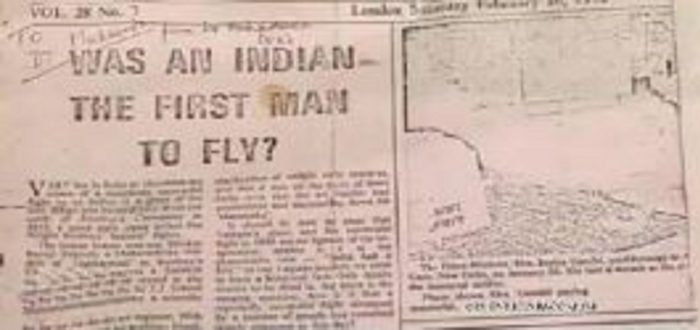
Newspaper report about the alleged Vimana flight of 1895
We should note that there is some discrepancy as to how accurate the claims of this flight are, with some sources even differing on whether Talpade physically flew in the aircraft he had constructed, or whether he had merely launched it, unmanned from the ground.
Of course, there are some who are of a mindset that the success of the flight has been purposely overlooked and even suppressed. And while that perhaps seems unlikely, it surely wouldn’t be too much of a surprise if there wasn’t at least some partial truth to that. After all, no country would want to rewrite history and deny themselves their place in it through their citizens’ apparent achievements.
And personal bragging rights aside, if Talpade’s flight was found to be a success, it would bring into focus the reality-based nature of the Sanskrit writings that he took his instructions from. And that, in turn, would bring into question the apparent truths of other aspects of the text, ultimately, forcing us to reevaluate human history. In short, it doesn’t take that much of a stretch of the imagination, once again, to think such evidence of ancient technology would be distanced from mainstream thought.
The video below is a news segment on the apparent flight of Talpade’s aircraft.
The Hindu “Gods” – Evidence Of Extraterrestrial Visitation?
There are multiple gods in Hinduism. And to many who follow their teachings, they are mortal beings who once interacted with the human population. This is intriguing, as once again, much the same is told to us in the legends of ancient Egypt and Greece, as well as in many other legends and creation stories from around the world.
Undoubtedly the most powerful of the Hindu gods is Shiva, who is known as both the destructor and creator of worlds.
It is interesting to note that many depictions of Shiva usually feature him standing inside a circle with flames all around it. While this is speculation and wild interpretation, might this depiction actually be of a solid, round, flying craft? One that emits bright flames when arriving and departing?
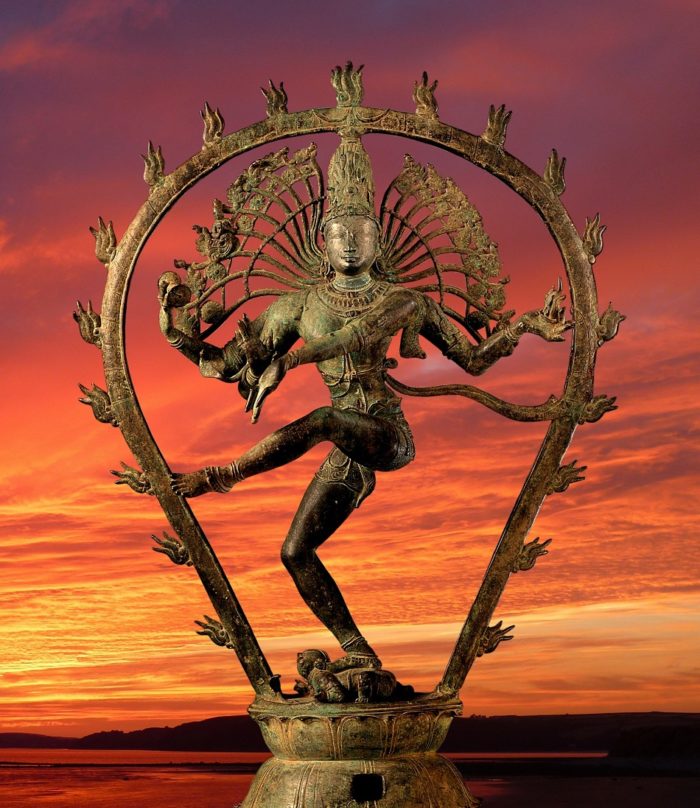
Depiction of the Hindu god, Shiva
Another point of interest to note about Shiva is that he is said to have a “third eye” in the middle of his forehead. If this third eye should open, a great light will emerge and destroy anything it looks at. What is interesting here is that usually, a third eye and the ability to use it is, even in the ancient world, is most often associate with spirituality and enlightenment. However, in the descriptions of the Sanskrit texts, this third eye appears to be a technological weapon of some kind. Even depictions of it appear to be of some kind of device that is essentially strapped to the head.
Given that Shiva was known as a destructor and a creator, and given that we know of the apparent technology utilized by the other ancient Hindu gods, then might this indeed be a weapon?
Indeed, the Hindu gods and the apparent connections to a speculative extraterrestrial presence here on Earth in antiquity could fill multiple volumes in their own right. Just like many of the other gods of other civilizations around the ancient world.
Similarities To Other Legends Of The Ancient World
Some researchers suggest that Shiva and the other Hindu gods arrived on Earth, many thousands of years ago, long before modern humans inhabited the planet. Indeed, these speculations match those of the Anunnaki that are discovered in the Cuneiform writings of ancient Sumer.
What is of further interest is that some ancient Tibetan legends state that after The Flood (if we accept it to be a genuine, real event), Shiva began mankind anew, with the “seeds” that he had retained during the event.
It is not that much of a stretch of the imagination to see the connections between such other flood stories as those found in Sumerian writings, and even of the story of Noah’s Ark.

Are the various gods of the ancient world connected?
It is also interesting to note that many root words of ancient Sanskrit writings can be found in languages across the world, including in the West. Might this suggest an influence that was much more widespread than history knows about, perhaps even global?
If there was a civilization visiting Earth from another planet or realm of existence, it might make sense that they would divide themselves among different regions of the planet. And this might explain why so many of the creation stories and legends resonate so cleanly with each other.
While many point to the lost civilization of Atlantis as having possible connections to such great civilizations of the ancient world, there is another alleged lost continent, whose speculative location is perfect to the Indus Valley civilization.
Connections To The Apparently Mythical Land Of Lemuria
If we stay with the legends of The Flood and the notion that it very well could have been a real-world event at the end of the last Ice Age, it is perhaps worth our time to examine the legends of Lemuria (sometimes called Mu), which similar to Atlantis, was said to have been swallowed up in a great deluge. And when we look at where many researchers believe Lemuria once stood, we can see that it is a (relative) stone’s throw away from the mainland Indus Valley region.
According to an article titled India 30,000 BCE: Do the Roots of Indian Culture Lie Drowned beneath the Indian Ocean? By David Lewis for Atlantis Rising magazine and republished in the book Forbidden History: Prehistoric Technologies, Extraterrestrial Intervention, and the Suppressed Origins of Civilization, the possibility of the existence of a sunken landmass first took hold in the 1860s when geologists began to notice “similarities between fossils and sedimentary strata in India, South Africa, Australia, and South America”.
This would ultimately lead many geologists of the day to suggest that either a land bridge or landmass once resided in the middle of the Indian Ocean and was likely submerged sometime around the end of the last Ice Age (which would sit nicely with when some researchers insist The Flood took place). This potentially sunken island was named Lemuria by English biologist Philip Scalter (said to be after the lemurs of Madagascar).
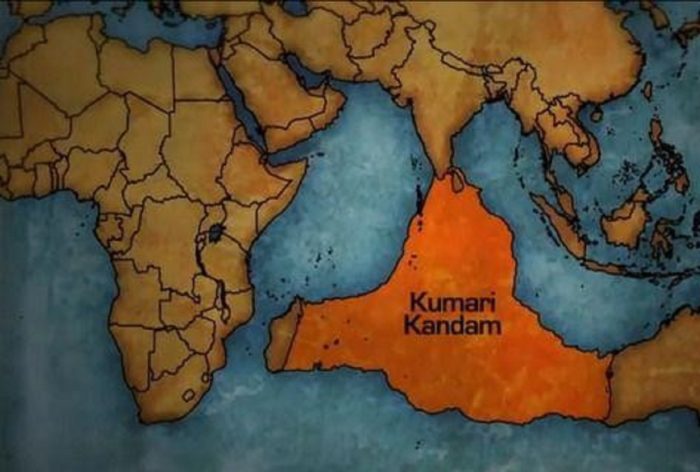
Where some researchers believe Lemuria might reside under the Indian Ocean
What is interesting to these (relatively speaking) modern-day suggestions of a sunken stretch of land that was likely was inhabited is that many of the writings in the Sanskrit texts speak of a “lost civilization” that once called a land that now resides beneath the waves of the Indian Ocean home. And this landmass was connected to what is now mainland India and Sri Lanka before it was washed away under the deluge.
An ancient Ceylonese (Sri Lankan) writing states that on this land, “25 palaces and 400,000 streets were swallowed up by the sea”. Another ancient writing states of now sunken land that:
Formerly (the) country was of continental dimensions, but the daughter of an evil spirit threw many rocks into the sea…the waters rose and swallowed up the land…everything alive perished, except what was able to save itself on one island that remained above the waters.
Indeed, if we assume the rocks thrown into the sea is a description of melting chunks of ice that broke away following the end of the last Ice Age, then the description is remarkably similar to the flooding (albeit on a much lesser if still devastating scale) that we see in nearby regions today.
Further suggestions of a landmass that once resided in what is now the Indian Ocean can also be found in the Tamil writings. One of these writings, the Silapathikaram, tells of a land of “49 provinces” and with “mountain ranges that yielded precious gems” (which sits nicely with what can be found in the land and mountains of modern-day India and Sri Lanka). Further according to the text, this kingdom reigned from around 30,000 BC to around 16,000 BC.
Might this civilization have been what we recognize as the gods today? It is interesting to note that many mystics of modern-day India claim direct descent from this one-time civilization. And was the end of that civilization brought about by a brutal war that saw highly advanced weapons turned on the population of the region?
A Global Civilization Of “The Gods” In Deep Antiquity?
While it is a notion still dismissed by most in the mainstream – particularly in the West – there is ample reason to believe that the ancient Sanskrit texts are indeed speaking of alien civilizations coming down from the sky and interacting and influencing humanity.
Might these gods (extraterrestrials) have been the same gods who ancient Egyptian and Greek legends speak of? Was their influence worldwide? Might Shiva, for example, by the same as Enki, Zeus, Amun-Ra, Odin, or Quetzalcoatl, to name but a few?
And why might those in the mainstream fields of research seemingly wish to cover over such, albeit speculative, evidence of such advanced technology in the ancient world? We might note that not only in the Indus Valley region but all over the world, discoveries suggesting that human civilization is a lot older and more advanced than we currently accept have been ridiculed and unfairly discredited in respective circles.
In recent years many researchers, including scholars, have suggested that, at the very least, the civilizations of Mesopotamia, Sumer, and ancient Egypt were likely sprung from that of the Indus Valley Civilization.
If we accept that many of the ancient legends, creation stories, and writings are essentially retellings of the same stories from a bygone age, then might it be that the original source of those accounts comes from the Indus Valley civilizations, writings, we might remind ourselves, that we are told by many Hindus and by many who have studied them, are historical fact and not legend.
The video below examines the idea that the gods of the Indus Valley were, in fact, extraterrestrial visitors.
Expert Opinion
Claims of extraterrestrial intervention and advanced weaponry in the Indus Valley revolve around elaborate drainage systems, perplexing skeletal remains at Mohenjo-Daro, and references in Hindu scriptures describing cataclysmic warfare. Researchers highlight possible nuclear-level blasts, advanced flight capabilities, and astonishing city planning that rivals or surpasses contemporary civilizations. Coupled with Sanskrit texts attributing godlike powers to ancient rulers, these theories form the backbone of many believers’ arguments.
However, critics note that the evidence for these claims remains speculative. Although certain verses in the Mahabharata and the archaeological anomalies at Mohenjo-Daro raise eyebrows, mainstream historians attribute such phenomena to interpretative leaps, normal decomposition patterns, or natural processes. Prevalent doubts also stem from the broad symbolic readings of ancient texts and the scarcity of corroborative scientific data.
We find no definitive proof of extraterrestrial meddling, but intriguing hints remain fodder for further inquiry.
Marcus Lowth is an expert on this topic and has over 20 years experience studying and reporting in these fields. Marcus has written several books and appeared on TV shows as an expert investigator discussing these topics.
References
| ↑1 | The Mahabharata of Krishna-Dwaipayana Vyasa translated by Kisari Mohan Ganguli [published between 1883 and 1896] Book 7 Drona Parva https://www.bibliotecapleyades.net/vimanas/drona_parva/index.htm |
|---|---|
| ↑2 | Researchers find proof of ancient ‘atomic war’ a great many years prior, The Times Of India, March 22nd, 2019 https://timesofindia.indiatimes.com/blogs/thedanispost/researchers-find-proof-of-ancient-atomic-war-a-great-many-years-prior/ |
| ↑3 | Vedic Ion Engine, B.V.Sai Anoop, V.V.S.Nikhil Bharadwaj, T.V.Vineeta, N.Anirudh, Vooturi Lahari, M.Sai Dheeraj, Shaik Munna, Varanasi Krishna Chaitanya, Department of Aeronautical Engineering, MLR Institute of Technology, Hyderabad, International Journal of Engineering and Innovative Technology (IJEIT), Volume 4, Issue 3, September 2014 https://www.ijeit.com/Vol%204/Issue%203/IJEIT1412201409_08.pdf |
Fact Checking/Disclaimer
The stories, accounts, and discussions in this article may go against currently accepted science and common beliefs. The details included in the article are based on the reports, accounts and documentation available as provided by witnesses and publications - sources/references are published above.
We do not aim to prove nor disprove any of the theories, cases, or reports. You should read this article with an open mind and come to a conclusion yourself. Our motto always is, "you make up your own mind". Read more about how we fact-check content here.
Copyright & Republishing Policy
The entire article and the contents within are published by, wholly-owned and copyright of UFO Insight. The author does not own the rights to this content.
You may republish short quotes from this article with a reference back to the original UFO Insight article here as the source. You may not republish the article in its entirety.
